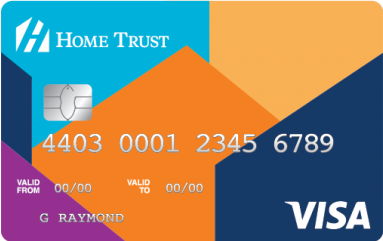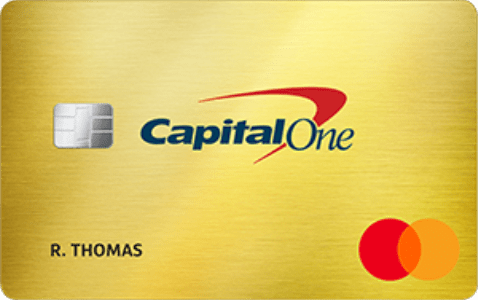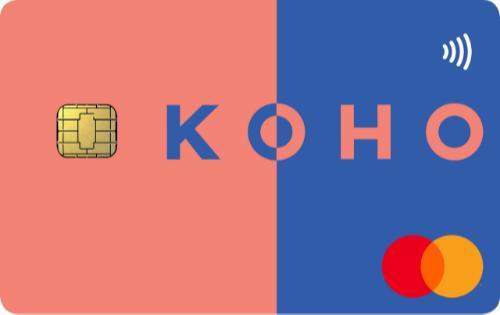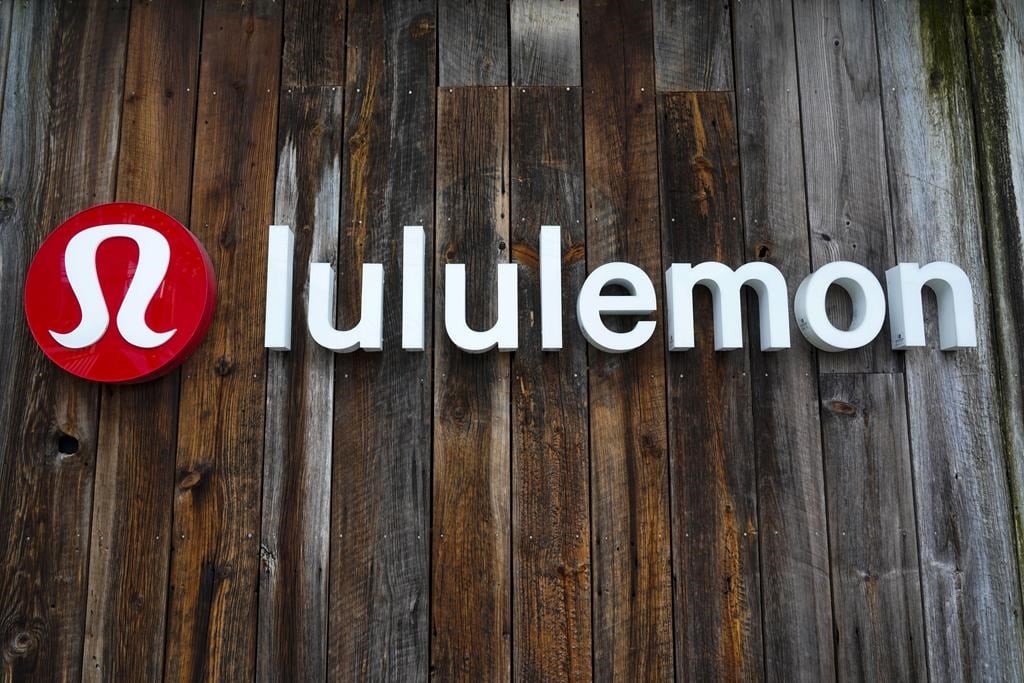-1697565841.png)
4 best credit cards for bad credit in Canada
Lightfield Studios / Shutterstock
In Canada, anything under around 560 is typically considered to be a bad credit score. Canadian credit scores range from 300 all the way up to 900, so if yours falls on the wrong side of 600, you may have trouble borrowing money. But don’t worry: it’s definitely possible.
Poor credit can make a lot of things more difficult, but we’re here to help you get a credit card. After all, they can be important credit-building tools and provide a safer way to spend, and everyone deserves a shot at a credit card if they want one.
Here are five of the best credit cards in Canada for people with bad credit including secured credit cards and even a prepaid option.
Best secured and unsecured credit cards for bad credit
- Best for bankruptcy: Home Trust Secured Visa
- Best for low interest: Home Trust Secured Visa (Low Interest Rate)
- Best for no credit: Capital One Guaranteed Mastercard®
- Best prepaid: KOHO
Best for bankruptcy
Home Trust Secured Visa
$0 Annual Fee Opt for $59 annual fee and pay 14.90% APR interest
19.99% Purchase APR
21.99% Cash Advance APR
Good Recommended Credit Score
$0 Required Annual Personal Income
$0 Required Annual Household Income
$500 Min Security Deposit
Pros
-
No annual fee
-
21-day interest-free grace period after monthly statement due date
Cons
-
Higher purchase interest rate
Overview
As much as we like to recommend against carrying a credit card balance every month, we understand that things happen and sometimes you don’t feel like you have any other option. When this is the case, a low-interest credit card can provide a small safety net. You’ll still get charged interest if you can’t pay off your balance, but it’ll cost you less and help to keep your debt a little more manageable in the long run.
The low-interest rate version of the Home Trust Secured Visa works the same way as the regular rate version discussed above. Except in this case, you swap a 19.99% interest rate on purchases for a 14.90% interest rate and pay a $59 (or $5/month) annual fee in exchange. The difference in rates may not seem huge but can make a significant difference when you miss due dates, experience income interruptions, or are otherwise unable to make payments.
This secured credit card requires a minimum deposit of at least $500 and allows a maximum deposit of $10,000. There is no hard income requirement and you may be able to qualify with poor credit and a very limited history.
It’s important to be realistic with yourself when choosing a credit card. If you can see yourself struggling to keep your card paid off from time to time, give this somewhat safer Home Trust Secured Visa (Low Rate) a shot.
Best for low interest
Home Trust Secured Visa (Low Rate)
$0 Annual Fee Opt for $59 annual fee and pay 14.90% APR interest
19.99% Purchase APR
21.99% Cash Advance APR
Good Recommended Credit Score
$0 Required Annual Personal Income
$0 Required Annual Household Income
$500 Min Security Deposit
Pros
-
Flexible credit limit ranges from $500 to $10,000
-
21-day interest-free grace period after monthly statement due date
Cons
-
$59 (or $5/month) annual fee
-
No rewards, perks, or benefits
Overview
As much as we like to recommend against carrying a credit card balance every month, we understand that things happen and sometimes you don’t feel like you have any other option. When this is the case, a low-interest credit card can provide a small safety net. You’ll still get charged interest if you can’t pay off your balance, but it’ll cost you less and help to keep your debt a little more manageable in the long run.
The low-interest rate version of the Home Trust Secured Visa works the same way as the regular rate version discussed above. Except in this case, you swap a 19.99% interest rate on purchases for a 14.90% interest rate and pay a $59 (or $5/month) annual fee in exchange. The difference in rates may not seem huge but can make a significant difference when you miss due dates, experience income interruptions, or are otherwise unable to make payments.
This secured credit card requires a minimum deposit of at least $500 and allows a maximum deposit of $10,000. There is no hard income requirement and you may be able to qualify with poor credit and a very limited history.
It’s important to be realistic with yourself when choosing a credit card. If you can see yourself struggling to keep your card paid off from time to time, give this somewhat safer Home Trust Secured Visa (Low Rate) a shot.
Best for no credit
Capital One Guaranteed Mastercard
$59 Annual Fee
21.90% Purchase APR
21.90% Cash Advance APR
21.90% Balance Transfer Rate
Poor Recommended Credit Score
$0 Required Annual Personal Income
$0 Required Annual Household Income
Pros
-
Almost guaranteed approval
-
Secured or unsecured (depending on credit)
-
Travel Accident Insurance, Baggage Delay, and Travel Assistance benefits (for Gold card)
Cons
-
Higher purchase, balance transfer, and cash advance interest rates
-
$59 annual fee
Overview
If you’re brand new to borrowing and your score is poor because you don’t have much of a credit history yet, guaranteed approval credit cards can be your friend. These can give you somewhere to start on your credit-building journey and improve your chances of approval for future credit accounts.
For beginners including young adults and newcomers to Canada, the Capital One Guaranteed Mastercard® could be a great fit. Approval for this card is guaranteed as long as you’re at least the age of majority in your province or territory, you haven’t applied for another Capital One card or account in the past 30 days, you don’t have a Capital One account, and you haven’t had a Capital One account that was closed in the past year.
There are two versions of the Capital One Guaranteed Mastercard®: the unsecured version (called the Gold card) and the secured version. When you apply, Capital One will check your credit to see if you qualify for the unsecured card and, if you don’t, approve you for the secured card. Only the unsecured card includes travel benefits and purchase protection.
You won’t know whether you’re approved for the unsecured or secured version until after you’ve applied. If your credit history is really limited, you may only qualify for the secured version and be required to make a deposit of between $75 and $300, determined by Capital One.
If your history is okay, you may be approved for the unsecured version of this credit card even if your credit rating is very poor. But if not, this is a beneficial secured card for those rebuilding their credit or building their history from scratch.
Best prepaid
KOHO
1% cash back on groceries and transportation
3% interest earned on your account balance
$0 Annual Fee Option to add credit building (price available in app)
0.00% Purchase APR
0.00% Cash Advance APR
Poor Recommended Credit Score
$0 Required Annual Personal Income
$0 Required Annual Household Income
Pros
-
0.25% to 2% cash back on eligible category purchases; up to 6% cash back extra at partnered merchants
-
Earn saving interests on your entire KOHO account balance (up to 2%; no minimum deposit requirement)
-
Easy subscription is free
-
Optional credit-building feature for additional fee with free financial coaching services
Cons
-
Credit building costs $7-$10 a month extra
-
Annual fee ranges from $0 to $84 (or $9/month) depending on your subscription plan
-
1.5% foreign transaction fee (for Easy and Essential subscriptions)
Overview
While not technically a credit card, we wanted to include a prepaid card on our list because this is another legitimate option for those with bad credit scores.
But first, the term “prepaid credit cards” is actually a bit of a misnomer. When people refer to prepaid credit cards, what they’re referring to are prepaid debit cards. These are debit cards that you can continuously reload and use. You can spend only up to the total amount loaded and add more funds to the card from a bank account, ATM, or even store. Normally, prepaid cards don’t build credit because your payment activity wouldn’t be reported to the credit bureaus. But in the case of KOHO, you actually can build credit with debit.
The KOHO Prepaid Mastercard® does not require a hard credit check and gives you the choice to add on Credit Building by KOHO for an extra fee of $10 a month for 6 months ($7 for KOHO Extra). KOHO helps you build credit by opening a line of credit on your behalf and setting aside dedicated funds, completely separate from your account, to pay toward this line of credit. All you have to pay is the fee to use the tool and KOHO will make small repayments for you that will show up on your report. Credit Building is optional, but we recommend it for the opportunity to boost your score.
In lieu of an annual fee, this debit card comes with a monthly subscription fee unless you go with the free Easy plan. Each level includes different features and benefits. For example, the free Easy subscription earns 1% cash back on your spending on groceries, transportation and 0.5% interest on your balance while the Extra subscription earns 2% on Eating & Drinking, Groceries, Transportation (0.5% on other categories) and 2% interest on your balance. Easy also lets you earn up to 5% extra cash back at partnered merchants while with Extra you can earn up to 6%. The three subscription plan options are:
- Easy – Costs $0 a month, earns 1% cash back on groceries + transportation and 0.5% interest on your balance. Earn up to 5% extra cash back at partnered merchants. Added fee of $10 a month for Credit Building.
- Essential – Costs $48 (or $4/month), earns 1% cash back on eligible grocery spending, transportation, eating/drinking and 0.25% cash back on everything else, plus 1.5% interest on your balance. Partnered merchant discounts earn up to 5% extra cash back. Added fee of $7 a month for Credit Building in-app subscription.
- Extra – Costs $84 (or $9/month), earns 2% cash back on eligible grocery spending, transportation, eating & drinking and 0.5% cash back on everything else with the potential to earn more at select partnered merchants (up to 6% extra), plus 2% interest on your balance. Added fee of $7 a month for Credit Building by KOHO, no foreign transaction fees, and one free international withdrawal per month.
As you can see, the Extra subscription is packed with the most perks. But since you can build credit with any plan, it’s really up to you what you’re willing to pay. Another benefit of KOHO is that you can enable RoundUps to have your transactions rounded up to the nearest dollar and the extra sent automatically to a linked savings account.
If you’re looking for a credit card alternative with some of the benefits of credit and none of the associated risks, we highly recommend KOHO.
What is bad credit?
In Canada, bad credit is most often defined as a credit score below 560. Depending on your borrowing history, your credit score can fall anywhere from 300 to 900 points. The average credit score is around 650, which would be considered fair credit. This is about the middle ground of what lenders are looking for.
There are a lot of different ways to land yourself in Bad Credit Territory. Carrying balances on your credit cards without paying them off, missing bill payments for so long that they’re sent to collections, putting too much of your income toward debt repayment, and borrowing too close to your overall credit limit can all dig your score into a hole that can be tough to dig yourself out of.
This is just one possible way to end up with bad credit, but limited history can also be a pitfall. If you don’t have a Canadian credit history yet because you don’t have any credit accounts, you won’t have a credit score at all. This is true of new immigrants to the country who have to start from the beginning. Then, after a few months of borrowing and making payments, you will start to generate a credit history. The majority of lenders won’t check your report to determine your creditworthiness until you have at least 18 months’ worth of credit.
Most people with new credit do not start off with a bad score. More often, they fall somewhere in the “fair” range. But if you aren’t careful from the beginning, you may find yourself with a bad credit score not long after you’ve started borrowing. Setting good habits from the start is crucial.
How to choose a credit card when you have bad credit
Choosing from different cards for bad credit means compromising on features you’re willing to be flexible on in the interest (get it?) of getting the ones that really matter to you. Here are the main things to look for if you’re thinking about applying for a credit card.
Interest
None of us want to pay credit card interest, but it’s better to be prepared for this possibility than to be blindsided by interest rates. Always, always, always find out the interest cards for any credit card you consider signing up for.
If you’ve struggled to stay on top of your credit card debt in the past, consider low-interest cards such as the Home Trust Secured Visa (Low Rate). These can provide some form of protection if you slip up, but they’re not a solution to the problem. Long-term, you’ll want to teach yourself to borrow responsibly and figure out a system for making your minimum payments on time every month.
Fees
Are you willing to pay an annual fee for more benefits or would you rather save now and try applying for a different credit card later? The fact of the matter is, a lot of credit cards for bad credit have an annual fee, but this can be avoided if it’s a dealbreaker for you.
Other fees to be aware of are foreign currency conversion fees you’ll pay if you take your card out of the country, late fees if you ever miss a payment due date, balance transfer fees, and cash advance fees.
Credit reporting
If your goal is to build your history and improve your score, make sure to choose a card that will help you do this. Look into how your activity will be reported on your credit for any given card.
Almost all unsecured credit cards show up on your credit report, and many secured credit cards report all of your payments to the two major credit bureaus in Canada too. But some cards may report only to one credit bureau or to none at all. Or in some cases, report only some of your activity. And prepaid “credit cards” – or, more accurately, prepaid debit cards – almost never show up on your credit (with the exception of the KOHO, obviously).
Just remember that while credit reporting can help you, it can also hurt you. Card issuers will report what you’re up to whether you’re paying your balance off in time each month or not, so your credit can either soar or suffer as a direct result of your activity. Let this motivate you to make. Those. Payments.
Approval requirements
Credit cards for bad credit have requirements that are easier to meet than those for good or excellent credit, but that doesn’t mean they aren’t still there. Consider minimum income and credit score requirements before submitting applications to sidestep the awkward (and damaging) experience of being denied. Some cards will be firmer on what they’re looking for than others, but it’s always good to know what their ideal applicant looks like on paper.
Credit limits and deposits
Another big factor to consider when comparing credit cards is the credit limit. If you get an unsecured credit card with bad credit, you’ll likely be approved for one of the lowest credit lines available. This is because you’re riskier to loan money to than an applicant with good credit.
If you choose a secured credit card, you may be able to determine your own credit limit by choosing how much you’re going to put down for your security deposit. If you go this route, make sure the minimum accepted deposit works for you as a credit limit or the maximum accepted deposit is enough for your borrowing needs.
And when making your deposit on a secured card, keep in mind that you’ll need to come up with the money upfront. You can get it back if you pay your balance every statement period, but you’ll have to be willing to part with the cash for as long as you have the card or transition it into an unsecured one.
And remember that lower limits can be a great thing if they get you to where you need to go.
How to improve bad credit
If your credit score is lacking, one of your number one financial priorities should be to improve it. You won’t be able to leap straight to a good credit score if yours is very poor, but it’s never a bad time to get to work. Good credit can unlock so many financial opportunities for you from lower interest rates for things like loans and credit cards to better, more favourable borrowing terms.
To figure out what to do first, think about how you got here. Is your credit poor because you’ve made some mistakes or is it poor because you don’t have much borrowing history?
Working your way up from bad credit after a series of missteps — such as defaults, delinquencies, and missed payments — should be about fixing your file. Go into credit repair mode by reporting inaccuracies in your credit file, getting errors removed by disputing them, and correcting your own mistakes by changing your habits. And once you’ve made it off of thin ice, pretend you’re still on it and don’t look back!
Building credit from scratch, on the other hand, is about baby steps. Make sure to only apply for the credit accounts you need and use them some but not so much that lenders worry about your cash flow. Find a balance between borrowing and repaying that works for you and shows responsibility and experience. And click the link below for more tips.
Read more: This hack can raise your credit score by 100 points in 6 months
Best ways to use credit cards if you have bad credit
Credit cards, both unsecured and secured, can be incredibly helpful tools for improving your credit score, but it’s important to use them wisely — especially if your credit score is not where you want it to be. Otherwise, you risk knocking it down even further. Not the move.
Here are a few tips for improving your credit with a credit card.
Pay your bills in full and on time – Payment history plays a significant role in your credit score, so keep on top of any bill payments. If it helps, you can make multiple smaller payments throughout the month instead of one big chunk at the end. Create those reminders, use those finance apps, and set automatic payments if needed.
Keep your balance low (but not nonexistent)– The more space you have on your card, the better it looks. Ideally, you shouldn’t be using more than 30% of the credit available on your credit card. And using some of your available credit and paying it back makes you look good.
Don’t apply for too many credit cards at once – Too many attempts to borrow is a red flag. Lenders may worry that your income doesn’t support your lifestyle or that you’re taking on more debt than you can realistically repay. It’s always a good idea to wait at least six months between any kind of credit application if you can.
Keep your cards — and use them – Remember, your credit score is based on credit history, so if you cancel any of your credit accounts, you lose both good and bad proof of borrowing background. Cancelling cards can also bring down the overall age of your accounts, which makes your credit file appear thinner and make you seem less experienced than you are.
Use your credit cards – You want to be active with the credit cards you do have to show that you can manage your payments responsibly. Letting cards sit untouched can call into question your ability to make repayments. Lenders want proof that you can handle credit, which means letting your credit file do the talking for you.
Secured vs. unsecured credit cards: Which is best for poor credit?
There are advantages and disadvantages to both secured and unsecured cards for borrowers with bad credit, so how do you choose? Here are the pros and cons of both.
Unsecured cards
An unsecured credit card is a traditional credit card. With these credit cards, there is no collateral, so the issuer has no guarantee that the money they lend you will be paid back. This requires issuers to trust applicants to repay their debt and approve them based on creditworthiness. They look for evidence of on-time payments, borrowing experience, and more in your file.
Therefore, the better your credit, the more likely you are to be approved for an unsecured card. Many unsecured credit cards offer perks and benefits and may also earn rewards.
If you can’t qualify for an unsecured credit card, it’s typically because you present too much risk to lenders. This could be because you have things in your credit history such as defaults, bankruptcies, or delinquencies that show that you’ve struggled to repay your debt in the past. No credit history (which could be the case if you’re a new immigrant to Canada) can also be a major cause for concern that prevents you from getting approved.
And with that, let’s move on to secured cards.
Secured cards
In cases where you’re seen as too risky, a secured credit card is often your best bet. These require you to put down a security deposit when signing up that then (very often) becomes your credit limit. This deposit serves as collateral for the credit card issuer. As long as you continue making your payments, you can get this deposit back if/when you close the credit card. If you can’t make payments, the issuer will keep your deposit and very likely close your card. They don’t lose the money they loaned you because they kept some of yours just in case.
Both unsecured and secured credit cards require to you make regular monthly payments and report your payment history to the credit bureaus. But unsecured credit cards tend to have much higher credit limits than secured cards, making it easier to rack up debt. With a secured card, you know you’re at least covered up to your credit limit because of your deposit.
Many secured cards let you increase your credit limit after a certain number of on-time bill payments. Some even allow you to graduate to an unsecured credit card over time and get your money back.
The security deposit required for a secured credit card could be anything from $300 to $10,000, and you usually get to decide how much you’re going to put down. But sometimes, the credit card issuer will look at your file to decide what they need you to deposit in order to approve your application. Often, your deposit equals your credit limit. So if you deposit $2,000, you can spend up to $2,000 each period and borrow up to this line again after paying it off. Rinse and repeat.
Secured cards may or may not include perks and benefits. Often, they have higher annual fees and interest rates than other cards. This is part of the deal for the opportunity to build credit.
Read more: What credit card should you have at your income level?
Summary
Having bad credit can be discouraging, to say the least. But knowing that there are many great credit cards out there for bad credit should help.
Even with a not-so-great credit history, you can still enjoy a lot of the same benefits that come with other cards and make progress on fixing, building, or improving your credit.
Read more:
Disclaimer
The content provided on Money.ca is information to help users become financially literate. It is neither tax nor legal advice, is not intended to be relied upon as a forecast, research or investment advice, and is not a recommendation, offer or solicitation to buy or sell any securities or to adopt any investment strategy. Tax, investment and all other decisions should be made, as appropriate, only with guidance from a qualified professional. We make no representation or warranty of any kind, either express or implied, with respect to the data provided, the timeliness thereof, the results to be obtained by the use thereof or any other matter.







